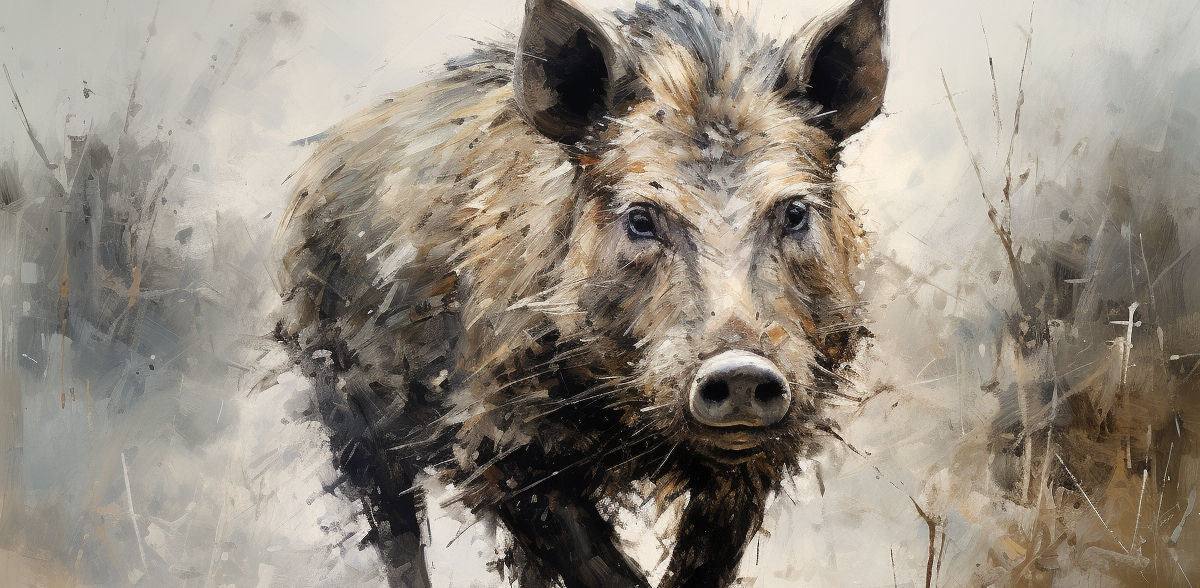The Wild Boar Paradox - Finally Solved
Why wild boar meat still has higher radioactivity than other foods
Advertisement
Decades after the Chernobyl nuclear accident, wild boar meat is still surprisingly radioactive. The solution to the riddle: an important other cause had been overlooked.
The Chernobyl nuclear accident in 1986 had a major impact on the forest ecosystem in Central Europe. After the accident, the consumption of mushrooms was discouraged because of the high radioactive contamination, and the meat of wild animals was also severely affected for several years. While the contamination of deer and roe deer decreased over time as expected, the measured levels of radioactivity in the meat of wild boar remained surprisingly high. The limit values are still being exceed by a significant margin in some samples today. For many years, this "wild boar paradox" was considered unsolved - but now, through elaborate measurements by TU Wien (Vienna) and the Leibniz University of Hannover, an explanation has been found: It is a late aftermath of the nuclear weapons tests from the 1960s.
More radiation than physics allows?
"The most important element for the radioactivity of the samples is cesium-137, with a half-life of about 30 years," says Prof. Georg Steinhauser of TU Wien. "Hence, after 30 years, half of the material has decayed all by itself." Radiation exposure to food, however, usually declines much faster. After all, the cesium has dispersed since Chernobyl, was washed out by rainwater, bound to minerals or perhaps migrated deep into the soil, so it is no longer absorbed by plants and animals in the same quantities as it was immediately after the reactor accident. Thus, after one half-life, most food samples exhibit not simply just half the original activity concentration, but much less.
In the case of wild boar meat, however, things are different: there, the radiation levels have remained almost constant. They decrease much more slowly than would be expected from the natural radioactive decay of cesium alone – a result that at first glance seems completely contradictory from a physical point of view.
To this day, samples of wild boar meat are still measured that are unsuitable for consumption because their radiation levels clearly exceed the permitted limit. This may also be a reason for the fact that wild boars experience less hunting pressure in some areas and their overpopulation often causes great damage to agriculture and forestry.
In search of the cesium fingerprint
Prof. Georg Steinhauser, who moved from Leibniz Universität Hannover to TU Wien in 2022, and his team set out to get to the bottom of this puzzle: By making new, more precise measurements, they wanted to determine not only the amount but also the origin of the radioactivity.
"This is possible because different sources of radioactive isotopes have different physical fingerprints," explains Dr. Bin Feng, who conducts his research at the Institute of Inorganic Chemistry at Leibniz Universität Hannover and the TRIGA Center Atominstitut at TU Wien. "For example, they do not only release cesium-137, but also cesium-135, a cesium isotope with a much longer half-life." The ratio of the two types of cesium is not always the same – for example, fallout from the Chernobyl nuclear accident had an isotope fingerprint different from that of the nuclear weapons tests of the 1960s. Measuring this ratio can thus provide information about the origin of the radioactive material.
Quantifying cesium-135 accurately, however, is very difficult. "Since it has such a long half-life and rarely decays, you can't just detect it with radiation detectors," says Georg Steinhauser. "You have to work with mass spectrometric methods and go to relatively great lengths to distinguish it precisely from other atoms. We have now succeeded in doing that."
The results showed that while a total of about 90% of the cesium-137 in Central Europe comes from Chernobyl, the proportion in the wild boar samples is much lower. Instead, a large proportion of the cesium in wild boar meat is attributable to nuclear weapons testing – up to 68% in some samples.
The deer truffle is (probably) to blame
The reason for this lies in the very special food preferences of wild boars: they particularly like to dig up deer truffles from the ground, and the radioactive cesium accumulates in these subterranean mushrooms with a long-time delay. "The cesium migrates downwards through the soil very slowly, sometimes only about one millimeter per year," says Georg Steinhauser. Deer truffles, which can be found at depths of 20-40 centimeters, are thus only now absorbing the cesium that was released in Chernobyl. The cesium from “old” nuclear weapons tests, on the other hand, has already arrived there some time ago."
Thus, there is a complicated interplay of different effects: Both the cesium from the nuclear weapons tests and the cesium from Chernobyl spread through the soil, and the truffles are thus reached by two different "cesium fronts" that gradually migrate through the soil. On the other hand, the cesium decays over the years. "If you add up all these effects, it can be explained why the radioactivity of deer truffles - and subsequently of pigs - remains relatively constant over the years," says Georg Steinhauser. Thus, the contamination of wild boar meat is also not expected to decrease significantly in the next few years, because some of the cesium from Chernobyl is only now being incorporated into the truffles. "Our work shows how complicated the interrelationships in natural ecosystems can be," says Georg Steinhauser, "but also precisely that the answers to such riddles can be found if your measurements are sufficiently accurate."
Original publication
Other news from the department science
Most read news
More news from our other portals
See the theme worlds for related content
Topic World Mass Spectrometry
Mass spectrometry enables us to detect and identify molecules and reveal their structure. Whether in chemistry, biochemistry or forensics - mass spectrometry opens up unexpected insights into the composition of our world. Immerse yourself in the fascinating world of mass spectrometry!

Topic World Mass Spectrometry
Mass spectrometry enables us to detect and identify molecules and reveal their structure. Whether in chemistry, biochemistry or forensics - mass spectrometry opens up unexpected insights into the composition of our world. Immerse yourself in the fascinating world of mass spectrometry!



























































